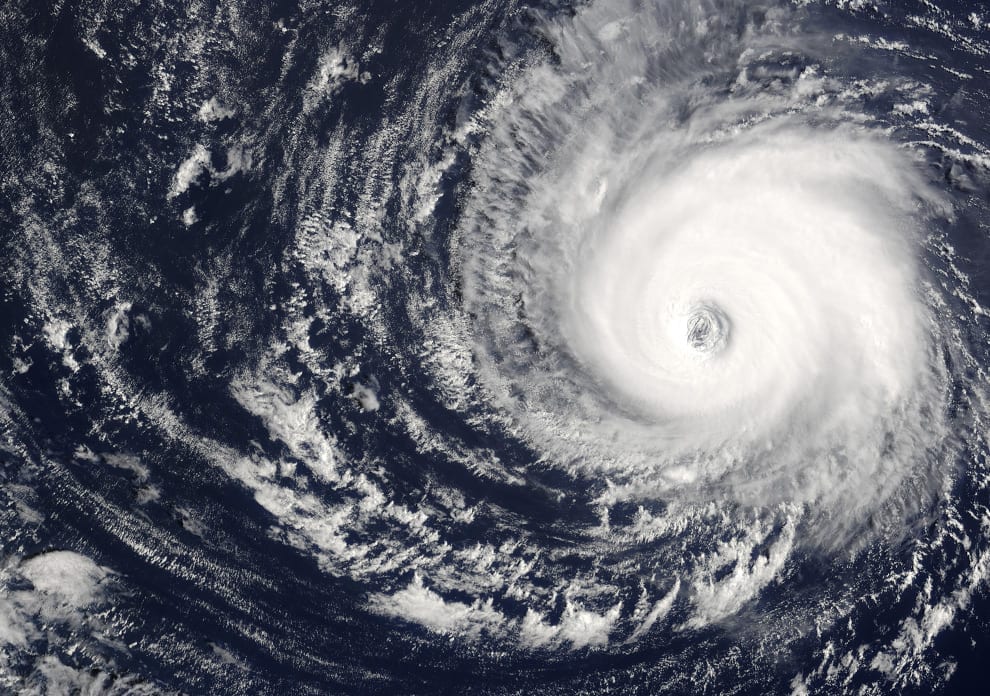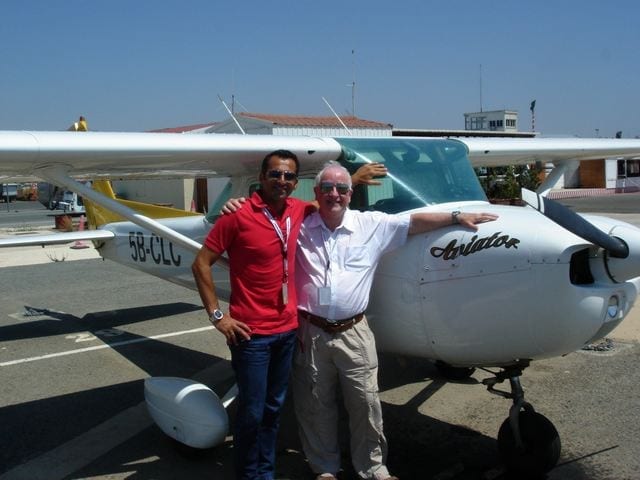I picked up a great (non-paying, volunteer) gig as a pilot flying an old Cessna 182 looking for sharks along the beaches between Wollongong and Ulladulla, New South Wales, Australia. My good friend Nigel Rosser (Captain on the B737 with QANTAS) put me on to it, as he had flown with them at the start of his career. Wollongong is about an hour and a half south of Sydney and a beautiful part of the world, especially in summer.
Unfortunately that beauty can be spoilt somewhat by sharks swimming around in their natural environment, hence the need for the volunteers who formed the Australian Aerial Patrol (AAP). The crew consisted of an observer in the back seat, radio operator/observer/flight coordinator in the right seat, and pilot/observer driving the thing. The aircraft was a Cessna 182P using the call sign AirPat2.
The standard mission was two flights per day (AM and PM), starting with a crew briefing and ensuring we each had our life vests on, and the ring pull safely tucked away so you didn’t inadvertently deploy the life jacket after snagging some part of the aircraft. The 182 was full of fuel and the endurance was well in excess of the nominated flight time, however, we needed plenty of loiter time should we find something.
A standard mission would have us taking off and heading north to Stanwell Tops (popular with hang gliders, so check carefully if there is an on shore wind), whilst flying at 500 feet just behind the breakers, giving the flight crew the greatest chance of spotting things in the water.
Upon reaching Stanwell Tops, a smart 180 is performed and we start making our way south. The observer in the back switches to the right hand side in order to obtain the best view. The radio operator makes contact with the various surf clubs patrolling the beaches as we head south as well as checking in with the police and maritime rescue operators.
It is surprisingly easy to spot items of interest from this altitude and position. Spotting large balls of fish (bait balls) would sometimes yield a sighting of a shark, looking to pick up an easy meal. A memorable sight was watching two sharks circle the bait ball (to keep the fish together) and then take it in turns to dive right through the middle, grabbing a filling meal with each push through the ball. They would then tighten the ball up again by circling before diving through for more fish.
The entire flight is hand flown (of course) and requires a fair amount of coordination. The aircraft needs to be maintained at 500 feet, parallel to the coast, as flat as possible in the turns (lifting the wing prevents the observer from seeing the surface), keeping an ear out on the local area frequency (the only radio I was allowed to use!), and watching the fuel burn. There is also a military airport and control zone to make our way through.
If contact was made with an object, the radio operator or observer would call “Tally Ho” and that was my cue to pull into a smart 60 degree turn immediately so we did not lose sight of the object. Good use of the rudder is required to keep co-ordinated flight – after a three-hour patrol with lots of contact, the last thing you want is a reputation for making your crew sick by slipping or skidding your way through turns.
I don’t know about you, but there is nothing more satisfying than feeling to the bump of flying through your own wake when you execute a beautiful 360-degree turn. Admittedly it didn’t happen all that often, and I blame that on the wind, not my flying abilities!
On the day in question, we had completed about half of the patrol and were flying through a tourist hot spot known as Jervis Bay. It’s a beautiful bay, sheltered from the open ocean, huge in size, with gentle waves and lovely sandy beaches.
We were flying north, so I was observing as well as flying. At the same time the observer and I noticed a large bull shark just behind the breakers. “Tally Ho” with both called, and around I went into a 60-degree left turn, pulling a solid 2Gs as we maintained visual contact with the shark.
We instantly knew it to be a bull shark – shape, colour and huge torso gave it away. He was a large one, probably 3 metres (almost 10 feet) long. There were no bait balls around, but a number of holiday makers on the beach and in the water.
The adrenalin kicks in as you realise the situation: large shark, swimmers in the water, unpatrolled beach, only the three of us know there is a shark within 10 metres (30 feet) of the swimmers.
After a (brief) discussion we decided to activate our siren. This is the first time I had heard this in action (other than testing on the ground) and the noise was startling. By this time I had switched from a tight turn over the target to a racetrack pattern, taking in the length of the beach whilst maintaining visual contact with the shark.
Swimmers started to leave the water, thankfully. Our aircraft is well known in the area, is painted yellow and red, and known for spotting sharks. So most people knew they were in danger when we start circling above their heads with our siren going off.
The radio operator had established contact with the local surf club, but they are some distance away, so we tried the police. We figured we had to try to get someone onto the beach to let the swimmers know the danger they were in.
This whole time (maybe four minutes) the shark was just swimming backwards and forwards along the beach, just behind the breakers. Seemingly just on the lookout for his next meal.
All of the swimmers had left the water, and we felt it safe to turn off the siren. This helped tremendously in being able to use the radios without the distraction of the siren shrieking. The situation looked better now: people were out of the water, we had got hold of the police and local surf patrol, the adrenaline was subsiding, and the situation was under control.
Occasionally a swimmer would start to head back to the water, but a few seconds blast on the siren got their attention, and they turned around.
Except for one man. He and his two children (probably 8 and 10 years old) headed back into the water, despite our sounding the siren and now holding a tight 360 orbit over the shark. They were 20 metres from the shark, and heading out to the breakers. Inside the aircraft all three of us were yelling at the man to grab his kids and turn around – obviously useless, we could not be heard above the noise of the aircraft, the wailing of the siren and the sound of the surf. We felt so helpless.
By now the kids were playing in the breakers, and the shark was swimming towards them. I remember saying to the guys, “We are going to see a fatality soon.” And the feeling of helplessness I had at being unable to prevent it.
The shark was now within 5 metres (16 feet) of the kids – dad was standing in the shallows. The only thing I could think to do was to swoop down over the family and try and get across to them the danger they were in. As we swept past them (slow speed, flaps out) we were yelling and pointing – doing everything we could to alert this family to the danger they were in.
This seemed to do the trick, along with people on the beach who were calling them back. With great relief we saw them turn around and head back to the beach.
A collective sigh of relief from all those on board, and the tension of the last few minutes went.
From there it was almost anticlimactic. The sharks must have got bored and, in need of a feed, they swam out to deeper water. We continued our race pattern for another 10 minutes to see if they would return. Based on experience, we knew they probably would not. After widening the race track to encompass a larger area, just to be sure one more time, we flew over the beach and rocked our wings.
The rest of the patrol north back to base was routine, with no further sighting of sharks.
Upon landing back at Wollongong Regional Airport (YWOL) I was hit with an over-powering tiredness. Holding that race track pattern for over 20 minutes, the tension of almost witnessing a shark attack a human, and knowing that we had done what we were meant to do (keep the public safe) whilst looking after my team and flying a safe mission, had really taken a toll on me.
After climbing into my car to drive back to Sydney, I needed a few minutes to reflect on what had gone on. I was completely rung out, and a warm beverage at a local truck stop on the way home helped restore my equilibrium before completing the drive home.
- Aerial patrol – spotting sharks - July 11, 2019
















Enjoyable article Tony, thanks for sharing. I’ve often wondered at the flight protocol for such spotting flights.
Thanks Cam – a lot of it was based on common sense, with a few scenarios documented. Main thing was focusing on safety!
Holy Cow! You deserve a Medal of Honor. And why do people go through red lights?
love the area there. now in bega. swim when time Permits abd NEVER IGNORE THE SIREN.
Love the dairy down in Bega, Graeme – and amazing part of the world. Thanks for reading my story, and thanks for not ignoring the siren!
Most beaches are now patrolled by drones, so the siren might sound a little tinny!